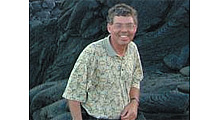ATSC Seeks Next-Gen TV Physical Layer Proposals

Doug Lung
On Tuesday the ATSC announced it was inviting proposals for next generation broadcast technologies.
In the announcement, Mark Richer, ATSC President, said, “Technology continues to advance and we are always looking to the horizon. Internet technology now permeates the consumer experience, and mobility has become a requirement. As we look forward to next-generation television standards, we want to take advantage of advances in compression and transmission technologies that will keep millions of people informed and entertained through broadcasting’s inherently efficient one-to-many architecture.”
Glenn Reitmeier, ATSC Chairman, noted: “the ATSC 3.0 effort is a crucial time for broadcasters, professional equipment manufacturers, consumer device manufacturers and all stakeholders to collaborate and create the future capabilities of over-the-air broadcasting.”
”ATSC 3.0 is expected to provide robust mobile services to devices that move, such as phones, tablets, laptops and personal televisions,” Richer said. “Since these devices are likely to move across borders, it’s highly desirable that the specification contains core technologies that will have broad international acceptance and enable global interoperability,”
Engineers will find the Call for Proposals for ATSC 3.0 Physical Layer as interesting as the announcement. The Call for Proposals (CFP) has some specific requirements, including a 30 percent increase in data capacity for the same 15 dB C/N as in ATSC 1.0. It also wants adjustable channel bandwidth (more or less than 6 MHz) in fixed increments, and the ability to support long echoes such as those that occur in a single-frequency-network.
The first “Function Requirement” is a spectral efficiency between 0.5 and 10 bps/Hz, with different quality of service (QoS) type and levels for each service. This implies data rates from 3 Mbps to 60 Mbps. A footnote says, “Note that it is the intention for the ATSC 3.0 system is to support delivery to fixed devices of content with video resolutions up to Ultra High Definition 3840 × 2160 at 60 fps, or such higher frame rates and/or resolutions as may be determined to be desirable and practical. The intention of the system is to support delivery to portable, handheld and vehicular devices of content with video resolution up to High Definition 1920 × 1080 at 60 fps. The system is also expected to support lower video resolutions and frame rates than those stated above.”
Another requirement is a “Flexible Physical Layer” which supports “different coverage scenarios, topologies and morphologies.” An example is simultaneous support of UHD and mobile HD services: “Robust adaptive support for mobile and fixed services shall be supported.”
The CFP provides a ruler against which evolving technologies (DVB-NGH is the obvious example) can be tested to see if they meet the requirements for ATSC 3.0. It appears some of the requirements could be a bit of a stretch, but that may not be such a bad idea, considering that ATSC 3.0 will be replacing a terrestrial DTV standard that's survived for 15 years.
Get the TV Tech Newsletter
The professional video industry's #1 source for news, trends and product and tech information. Sign up below.

Doug Lung is one of America's foremost authorities on broadcast RF technology. As vice president of Broadcast Technology for NBCUniversal Local, H. Douglas Lung leads NBC and Telemundo-owned stations’ RF and transmission affairs, including microwave, radars, satellite uplinks, and FCC technical filings. Beginning his career in 1976 at KSCI in Los Angeles, Lung has nearly 50 years of experience in broadcast television engineering. Beginning in 1985, he led the engineering department for what was to become the Telemundo network and station group, assisting in the design, construction and installation of the company’s broadcast and cable facilities. Other projects include work on the launch of Hawaii’s first UHF TV station, the rollout and testing of the ATSC mobile-handheld standard, and software development related to the incentive auction TV spectrum repack. A longtime columnist for TV Technology, Doug is also a regular contributor to IEEE Broadcast Technology. He is the recipient of the 2023 NAB Television Engineering Award. He also received a Tech Leadership Award from TV Tech publisher Future plc in 2021 and is a member of the IEEE Broadcast Technology Society and the Society of Broadcast Engineers.
